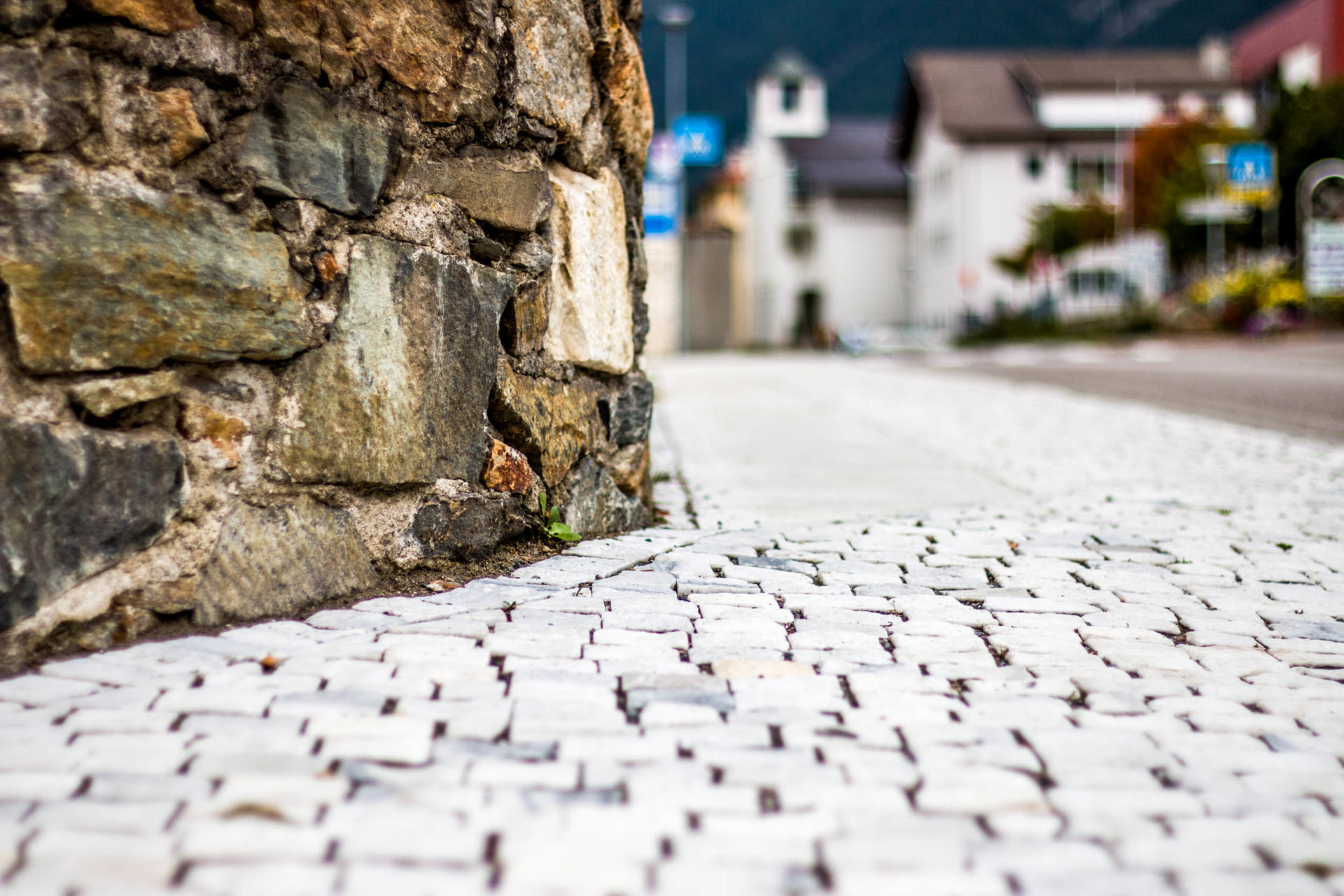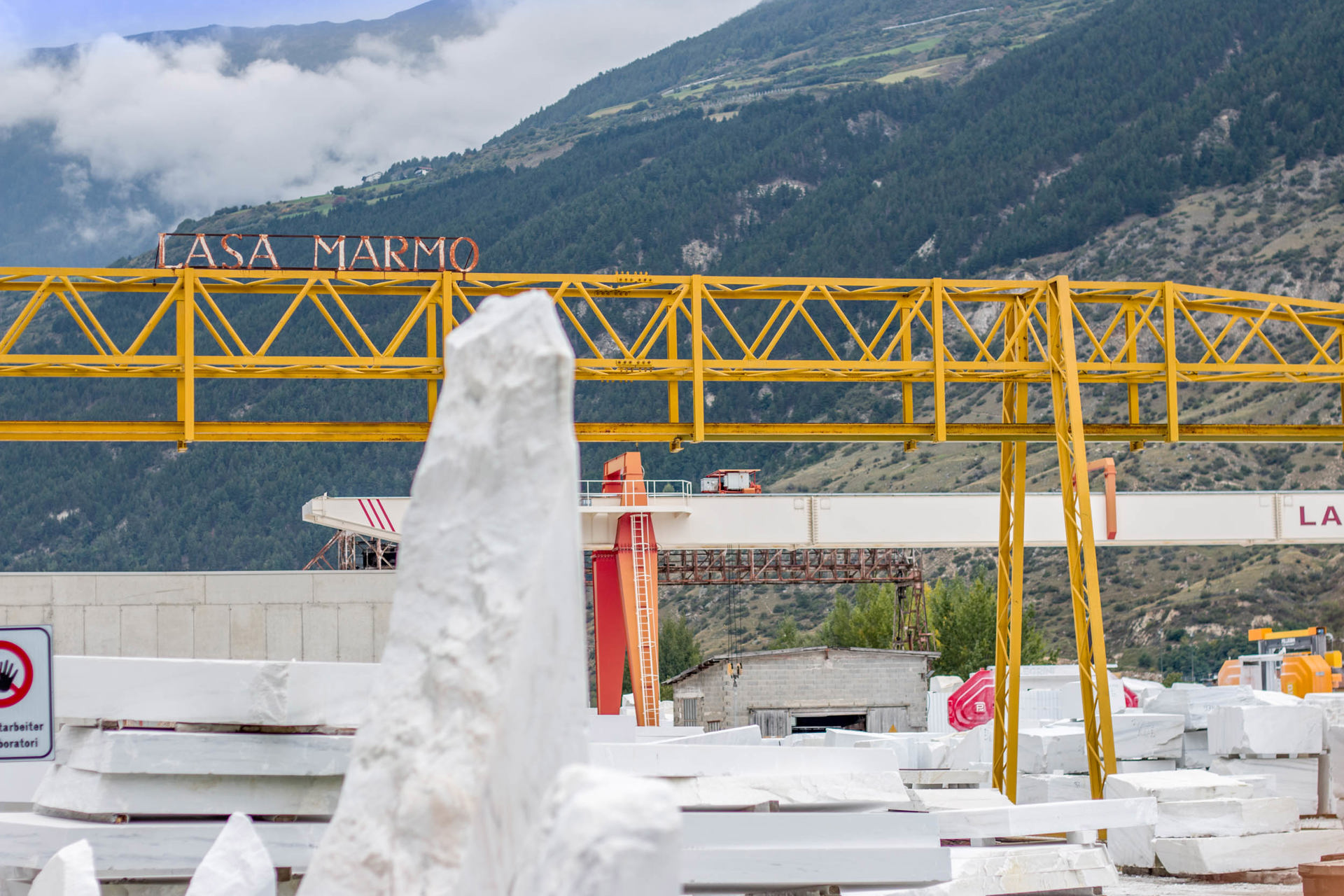















Marble from Laas
In the past, the marble of Mt. Nörderberg in Vinschgau was called Tyrolean or Vinschgau marble. In the 19th century, the term “Laaser Marmor” has come to be commonly used. Currently, the marble in Vinschgau is quarried by two companies under two different trading names.: The marble from Laas at about 1,600 m of altitude all year round and the marble from Göflan in the municipality of Schlanders at about 2,200 m of altitude during summer.
The history of marble quarrying in Laas
In Vinschgau, marble has been extracted systematically since the middle of the 19th century. In 1848 the mining rights for Laas and Göflan were purchased by Bernhard Schweizer, a Bavarian businessman, who supplied stonemasons working for Ludwig I of Bavaria. About 20 years later, Carl Steinhäuser, a sculptor from Bremen, and his son Johannes founded the “Laaser Marmorwerke”, which was the first central company in the field of marble quarrying.
Also, the vocational school for stone working in Laas was founded by Johannes Steinhäuser. In 1883, the Laas stonemason Josef Lechner leased the quarry from the municipality of Laas. Hikers will learn more about white marble on both educational trails in Laas and Göflan.
White gold
Laas marble is particularly hard, frost-resistant and has a unique shine. Already in the past, he was appreciated for his beauty and resistance, which is proven by prehistorical menhirs and Roman milestones along Via Claudia Augusta. At the beginning of the 16th century, a thriving stone carving art has evolved in Vinschgau. It can be seen still today in Churburg Castle, with artistically designed pillars in the arcades.
There are many architects and sculptors from all around the world that have used the marble of Laas, beginning with systematic quarrying in the 19th century. Famous examples are, for instance, the Pallas Athene fountain in front of the Parliament building in Vienna and the Heinrich Heine monument in New York. Even later, the marble from Vinschgau was used for many buildings, such as for the City Hall Memphis in the USA, the concert house Bozen and the mosque in Abu Dhabi.
From New York to Vienna
Still today, the marble from Vinschgau is used by artists and architects, having high standards regarding colour, shine and hardness. In 2016, there was opened the Oculus in New York, designed by famous architect Santiago Calatrave, which is at the same time the main hall and shopping centre of the new railway station at Ground Zero. For this project, 40,000 m² of Lasa Bianca Nuvolato were shipped to New York. Also, the gravestone having the shape of a concert piano on the cemetery in Vienna, containing the ash of German singer Udo Jürgens, was made of Vena Oro marble from Göflan.
Images

Marmor ist kein normales Gestein sondern ein Naturbaustoff welcher schon immer Herrscherhäuser und Paläste zierte.
Internet Consulting - Patrick Kammerlander
Marmor ist kein normales Gestein sondern ein Naturbaustoff welcher schon immer Herrscherhäuser und Paläste zierte.
Internet Consulting - Patrick Kammerlander
Marmor ist kein normales Gestein sondern ein Naturbaustoff welcher schon immer Herrscherhäuser und Paläste zierte.
Internet Consulting - Patrick Kammerlander
Marmor ist kein normales Gestein sondern ein Naturbaustoff welcher schon immer Herrscherhäuser und Paläste zierte.
Internet Consulting - Patrick Kammerlander
Marmor ist kein normales Gestein sondern ein Naturbaustoff welcher schon immer Herrscherhäuser und Paläste zierte.
Internet Consulting - Patrick Kammerlander
Marmor ist kein normales Gestein sondern ein Naturbaustoff welcher schon immer Herrscherhäuser und Paläste zierte.
Internet Consulting - Patrick Kammerlander
Marmor ist kein normales Gestein sondern ein Naturbaustoff welcher schon immer Herrscherhäuser und Paläste zierte.
Internet Consulting - Patrick Kammerlander
Marmor ist kein normales Gestein sondern ein Naturbaustoff welcher schon immer Herrscherhäuser und Paläste zierte.
Internet Consulting - Patrick Kammerlander
Marmor ist kein normales Gestein sondern ein Naturbaustoff welcher schon immer Herrscherhäuser und Paläste zierte.
Internet Consulting - Patrick KammerlanderCraft
Selected accommodations in Laas

- Historic family-run farmhouse
- Cosy apartments furnished with larch wood and marble
- High-quality distillery on site
- Garden with pond surrounded by orchards
- South Tyrol Guest Pass Vinschgau






















